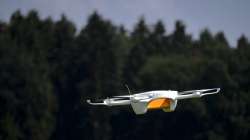Drones will have visual navigation like birds and insects, say experts
Sydney: A team of researchers including one of Indian origin, are developing a new biologically inspired drone or Unmanned Aerial Vehicles (UAVs) that will be able to visually coordinate on their own and navigate just

Sydney: A team of researchers including one of Indian origin, are developing a new biologically inspired drone or Unmanned Aerial Vehicles (UAVs) that will be able to visually coordinate on their own and navigate just like birds and flying insects do.
According to the researchers at the University of Queensland in Australia, the drones will be able to do their work without needing any human input, radar or even GPS satellite navigation.
A team of researchers are studying flying techniques that budgerigars and bees share, and applying their findings to Unmanned Aerial Vehicles (UAVs) control programmes.
“We study how small airborne creatures such as bees and birds use their vision to avoid collisions with obstacles, fly safely through narrow passages, control their height above the ground and more,” said lead researcher and Professor Mandyam Srinivasan.
“We then use biologically-inspired principles to design novel vision systems and algorithms for the guidance of UAVs,” he added in a university statement.
It has been noted that the size and architecture of brain is very different among insects and birds but when it comes to the visual processing in both animals, it is very effective at guiding their flight.
"Bees' brains weigh a 10th of a milligram and carry far fewer neurones than our own brains; yet the insects are capable of navigating accurately to food sources over 10 km away from their hive," said Srinivasan.
The team compares the flight of bees and budgies in particular because they are easy animals to study.
“The study of their behaviour could also reveal some of the basic principles of visual guidance in a number of organisms including humans,” he noted.
“These UAVs could be incredibly useful for applications like surveillance, rescue operations, defence, and planetary exploration,” Srinivasan explained.
(With Agency inputs)